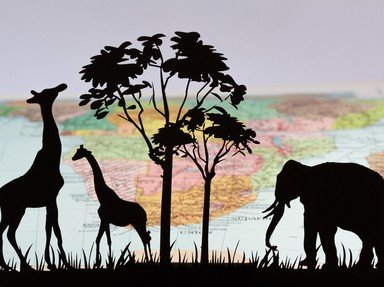Quiz Answer Key and Fun Facts
1. The marabou stork is just having lunch over there. What is one of his favourite foods?
2. The bat-eared fox is an insectivore living in east African and southern African savannahs. Who has the main responsibility for the welfare of their pups?
3. The wildebeest is only one of the many Bovidae in Africa. What is another name for the wildebeest?
4. Watch your step, there's a predator lurking in the water of the Everglades. Some humans may call it "a hand bag in original form". What predator has only his eyes and nostrils above the water when preparing an ambush for imprudent prey?
5. The springbok has a name that comes from the Afrikaans and Dutch languages, meaning what?
6. The lion is the second-largest living cat in the world. Which big Asian cat, no stranger to the water, is bigger than the Asian lion?
7. The meerkat is closely related to which other small mammal?
8. Exhibiting 'legionary behaviour', which insect often found near Australian watering holes, will raid and attack its prey to enable the ever-moving colony to feed?
9. Of the following list of animals, which is NOT an antelope-type animal?
10. Frogs in Africa? Not all of Africa is a desert so the African dwarf frog has a chance of survival in the tropical areas. Which part of Africa will these tiny frogs be primarily found?
Source: Author
lones78
This quiz was reviewed by FunTrivia editor
Tizzabelle before going online.
Any errors found in FunTrivia content are routinely corrected through our feedback system.


